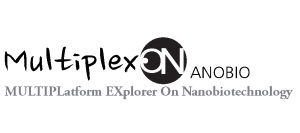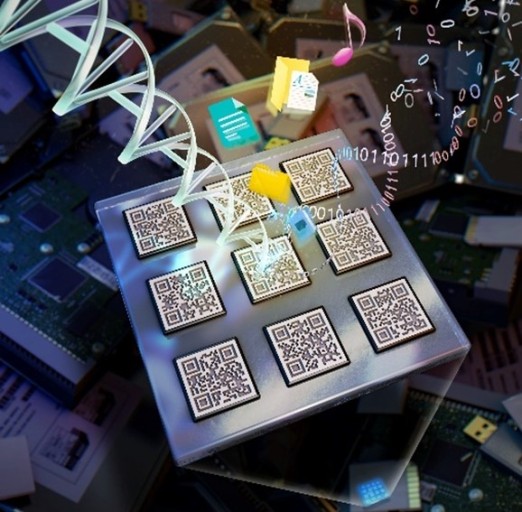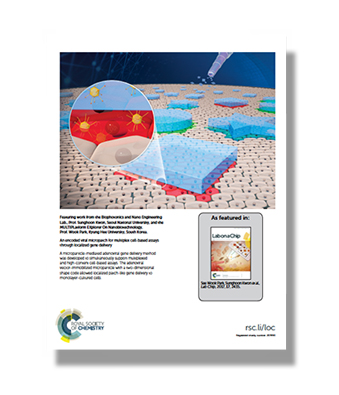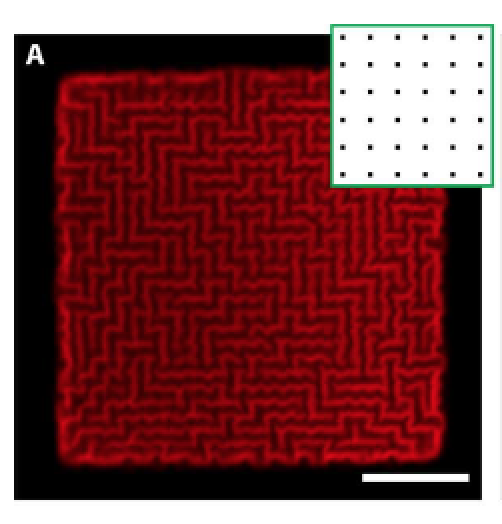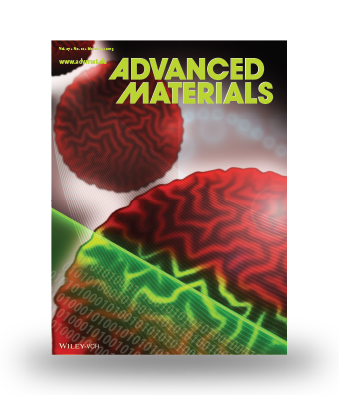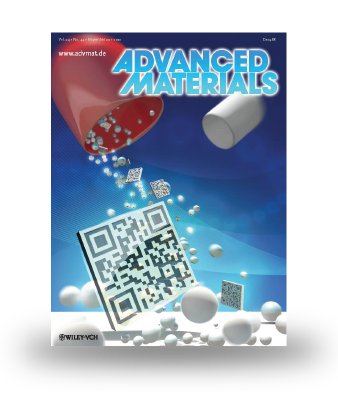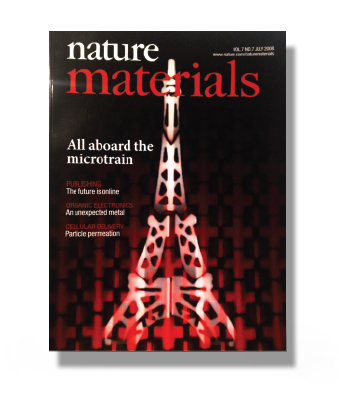2022 후기 대학원생 모집
경희대학교 전자정보융합공학과 나노바이오 연구실에서 2022학년도 후기 대학원생 (석사, 박사, 석/박통합과정)을 모집합니다.
나노바이오 연구실에서는 미세입자 기반 DNA data storage 기술, Micro/Nano fabrication 기술 등을 포함한 다양한 연구 주제로 융복합 연구를 진행하고 있으며 서울대학교, KIST, GIST등 다양한 외부 기관과 공동 연구를 진행하고 있습니다.
- 모집전공 분야
- -대학원 진학 예정자는 입학 전까지 연구원으로 생활하며 추후 대학원 진학
- -석사, 석/박사 통합과정 : 학부 졸업 예정자
- -박사 과정 : 석사 학위 소지자 또는 졸업 예정자
- -모집전공분야 : 의공학, 기계공학, 전자공학, 생물공학, 컴퓨터공학 등
- 혜택
- -대학원 등록금 & 생활비 지원
- -SCI 논문 작성 (논문 출판 인센티브 지급)
- -국내외 학회 참가비 & 여비 지원 및 발표
- 지원방법
- -지원자 이력서, 간단 자기소개서를 첨부한 이메일 제출 (This email address is being protected from spambots. You need JavaScript enabled to view it.) 후 개별 인터뷰 진행 예정
- -접수 기간 : 2022.04.05(화)~2022.04.15(금)
- 문의-경희대학교 전자공학과 박욱 교수 (This email address is being protected from spambots. You need JavaScript enabled to view it.)
- 최신 연구
경희대 전자공학과 박욱 교수 연구팀, 먼지 크기의 소금쟁이 로봇 개발 (2021.8)
경희대학교(총장 한균태) 전자공학과 박욱 교수 연구팀이 서울대학교 전기정보공학과 권성훈 교수, 하버드대학교 뷔즈 연구소(Wyss Institute)의 최영재 박사와 공동연구를 진행해 마이크로미터 크기지만 내외부 조작 없이 처음 제작한 모양만으로 다양한 동작을 선보이는 로봇을 개발했다. 연구 결과는 세계적인 학술지 <네이처 커뮤니케이션(Nature Communications), (IF=14.919)>에 게재됐다. 연구팀은 마랑고니 효과를 응용해, 내외부 조작 없이 수면 위를 움직이는 로봇을 개발했고, 형태 변화에 따른 움직임을 계산해 단순한 방향 제어뿐만 아니라 원하는 움직임을 행하도록 설계했다. 이번 연구는 한국연구재단과 교육부 기초과학연구 프로그램, 한국보건기술 R&D 프로젝트, KIST 기관 프로그램, 두뇌한국 21(Brain Korea 21) 플러스 프로젝트의 지원으로 진행됐다.
서울대 권성훈 교수, 경희대 박욱 교수 연구팀, 차세대 정보저장장치 DNA-디스크 개발 (2020.9)
서울대 공과대학은 전기정보공학과 권성훈 교수가 경희대 전자정보융합공학과 박욱 교수, 하버드 대학교 Wyss Institute의 최영재 박사, 서울대 전기정보공학부 배형종 박사와의 공동연구를 통해 하드디스크를 대체할 수 있는 차세대 정보저장장치, DNA-디스크를 개발했다고 16일 밝혔다.
전 세계 데이터의 90%가 최근 2년 동안 생성되었을 정도로 4차 산업혁명 시대를 맞아 전례없이 많은 데이터가 생산되고 있다. 방대한 데이터를 저장하기 위해 하드 디스크 드라이브(HDD)를 대체할 수 있는 차세대 정보저장장치에 대한 기술 개발이 요구되고 있고 미국에서는 마이크로소프트, 하버드 대학교, 워싱턴 대학교 등이 정부 주도하에 컨소시엄을 구성하여 DNA 메모리를 개발하고 있다. DNA 메모리는 반도체에 0과 1로 저장되던 2진법 디지털 데이터를, A,G,T,C로 이루어진 4진법 데이터로 변환하여 DNA 생화학분자에 저장하는 기술이다. 이 기술을 통해 가루 형태의 DNA 1kg에 전 세계의 모든 데이터를 저장할 수 있다.
본 연구는 세계적인 학술지 어드밴스드 머티리얼스(Advanced Materials)지에 15일자(독일 현지 시간)로 출판됐으며 삼성미래기술육성센터와 과학기술정보통신부 기초연구사업(리더연구)의 지원으로 진행됐다
Lab on a chip 2017 Backcover
An encoded viral micropatch for multiplex cellbased
assays through localized gene delivery
The increasing number of potential drug targets and compounds has led to the development of highthroughput
cell-based assays. Simultaneous processing of multiple targets in the same experiment based
on localized target gene expression is a very efficient strategy for this purpose. To address this need, we
present an adenoviral vector-immobilized microparticle with two-dimensional (2D) shape-encoding properties
that allows localized patch-like gene delivery to monolayer-cultured cells. This format conveniently
achieves multiplexed gene delivery compatible with both high-throughput cellular assays and fluorescence
high-content imaging instruments. A multiplex G protein-coupled receptor (GPCR) internalization assay
was developed to demonstrate the compatibility of this system with high-throughput image-based cellular
assays.
"Self-organization of maze-like structures via guided wrinkling" Science advances (2017)
Sophisticated three-dimensional (3D) structures found in nature are self-organized by bottom-up natural processes.
To artificially construct these complex systems, various bottom-up fabrication methods, designed to transform 2D
structures into 3D structures, have been developed as alternatives to conventional top-down lithography processes.
We present a different self-organization approach, where we construct microstructures with periodic and ordered,
but with random architecture, like mazes. For this purpose, we transformed planar surfaces using wrinkling to directly
use randomly generated ridges as maze walls. Highly regular maze structures, consisting of several tessellations
with customized designs, were fabricated by precisely controlling wrinkling with the ridge-guiding structure,
analogous to the creases in origami. The method presented here could have widespread applications in various
material systems with multiple length scales.
Advanced Materials 2015 Cover
An unclonable, fingerprint-mimicking anti-counterfeiting strategy is presented that encrypts polymeric particles with randomly generated silica film wrinkles. The generated wrinkle codes are as highly unique as human fingerprints and are technically irreproducible. Superior to previous physical unclonable functions, codes are tunable on demand and generable on various geometries. Reliable authentication of real-world products that have these microfingerprints is demonstrated using optical decoding methods.
Advanced Materials 2012 Cover
A QR-coded microtaggant for the anti-counterfeiting of drugs is proposed that can provide high capacity and error-correction capability. It is fabricated lithographically in a microfluidic channel with special consideration of the island patterns in the QR Code. The microtaggant is incorporated in the drug capsule (“on-dose authentication”) and can be read by a simple smartphone QR Code reader application when removed from the capsule and washed free of drug.
Nature materials 2008 Cover
Fluidic self-assembly is a promising pathway for parallel fabrication of devices made up of many small components. Here, we introduce 'railed microfluidics' as an agile method to guide and assemble microstructures inside fluidic channels. The guided movement of microstructures in microfluidic channels was achieved by fabricating grooves ('rails') on the top surface of the channels and also creating complementary polymeric microstructures that fit with the grooves. Using the rails as a guiding mechanism, we built complex one- and two-dimensional microsystems in which all the microstructures initially involved in the fabrication method were incorporated as components in the final product. Complex structures composed of more than 50 microstructures (each sized smaller than 50 mum) were fluidically self-assembled with zero error. Furthermore, we were able to use the rails to guide microstructures through different fluid solutions, successfully overcoming strong interfacial tension between solutions. On the basis of rail-guided self-assembly and cross-solution movement, we demonstrated heterogeneous fluidic self-assembly of polymeric microstructures and living cells. In addition to such assembly of in situ polymerized structures, we also guided and assembled externally fabricated silicon chips—demonstrating the feasible application of railed microfluidics to other materials systems.
- Hits: 91508
